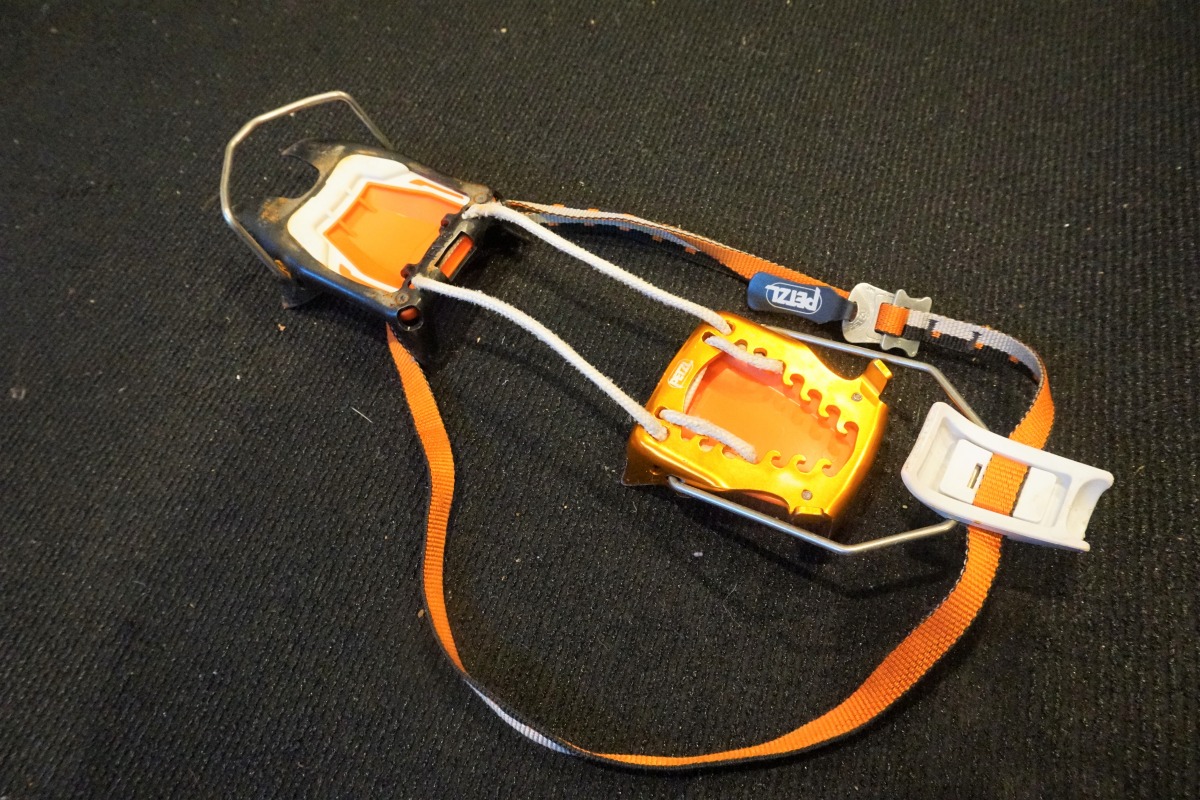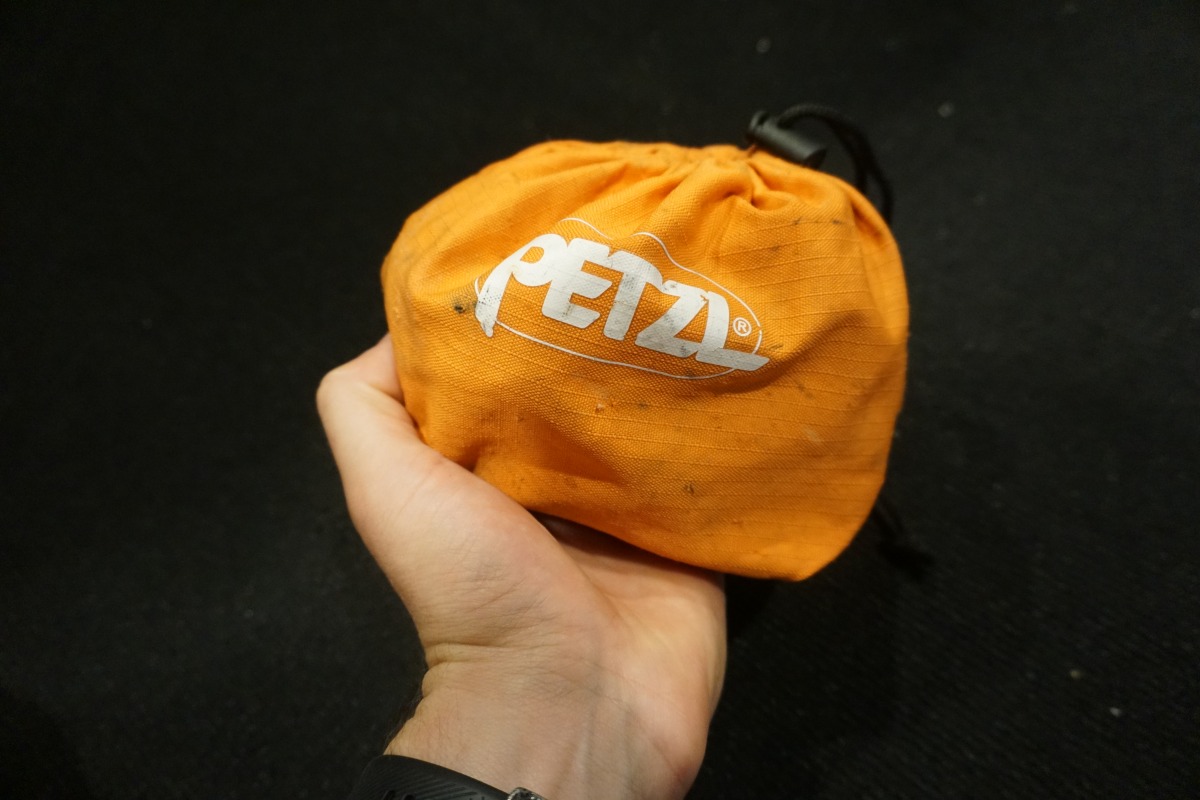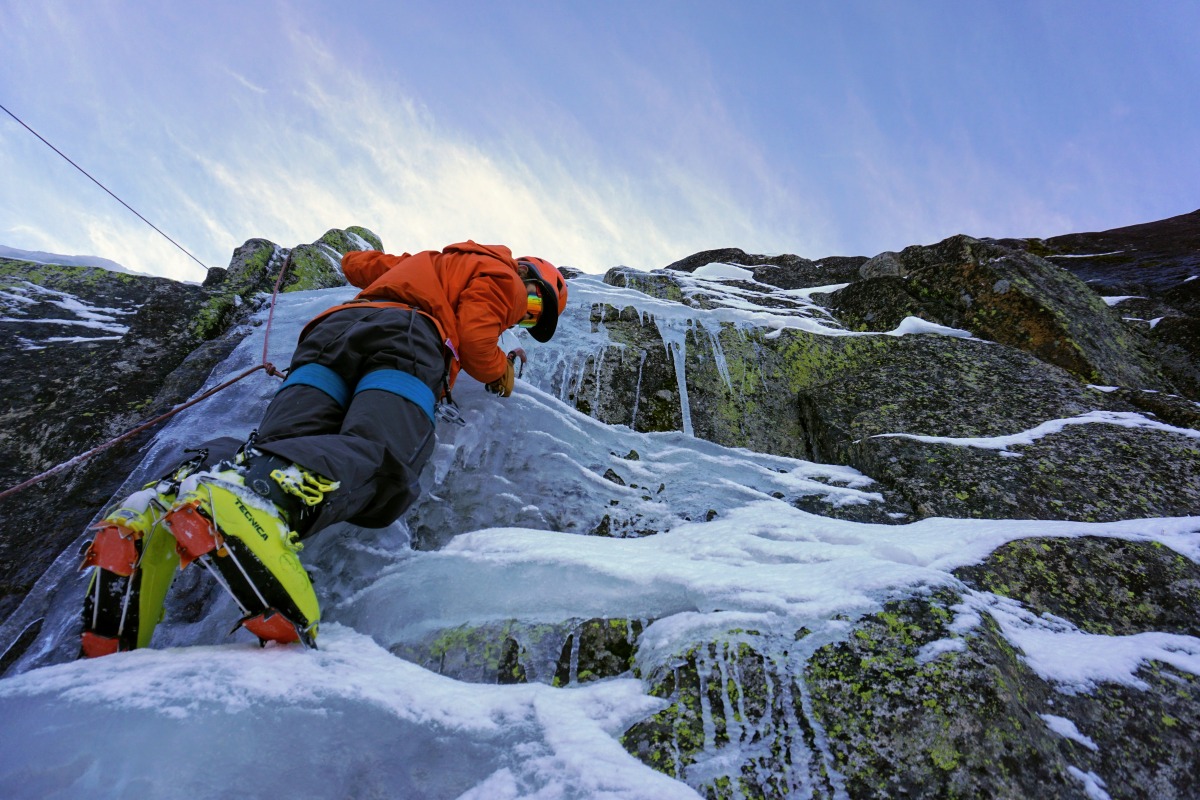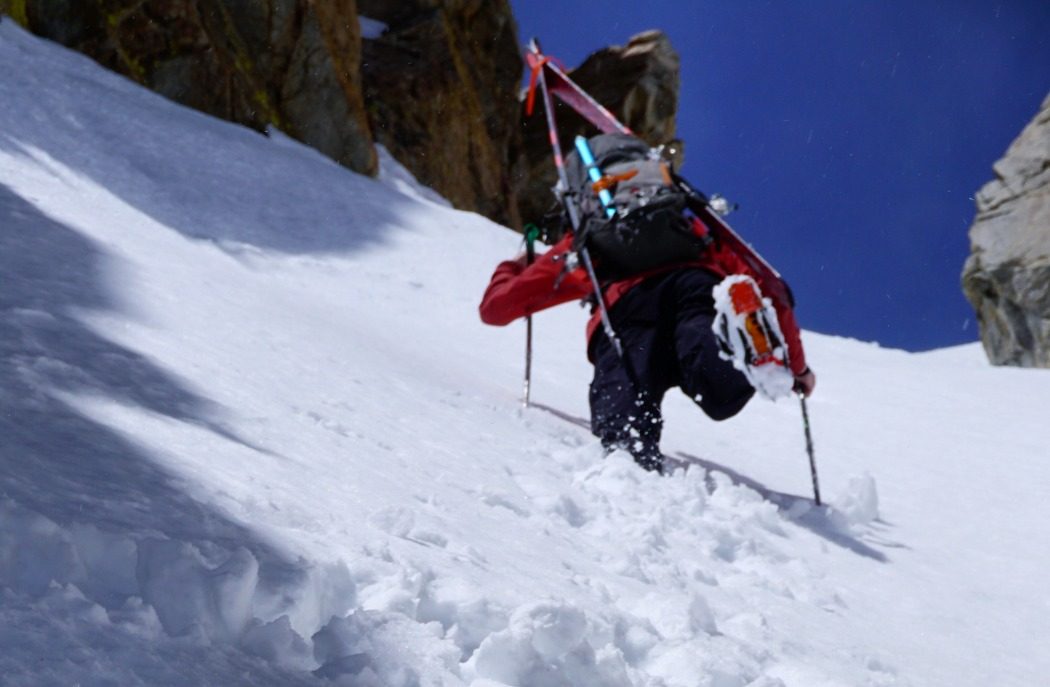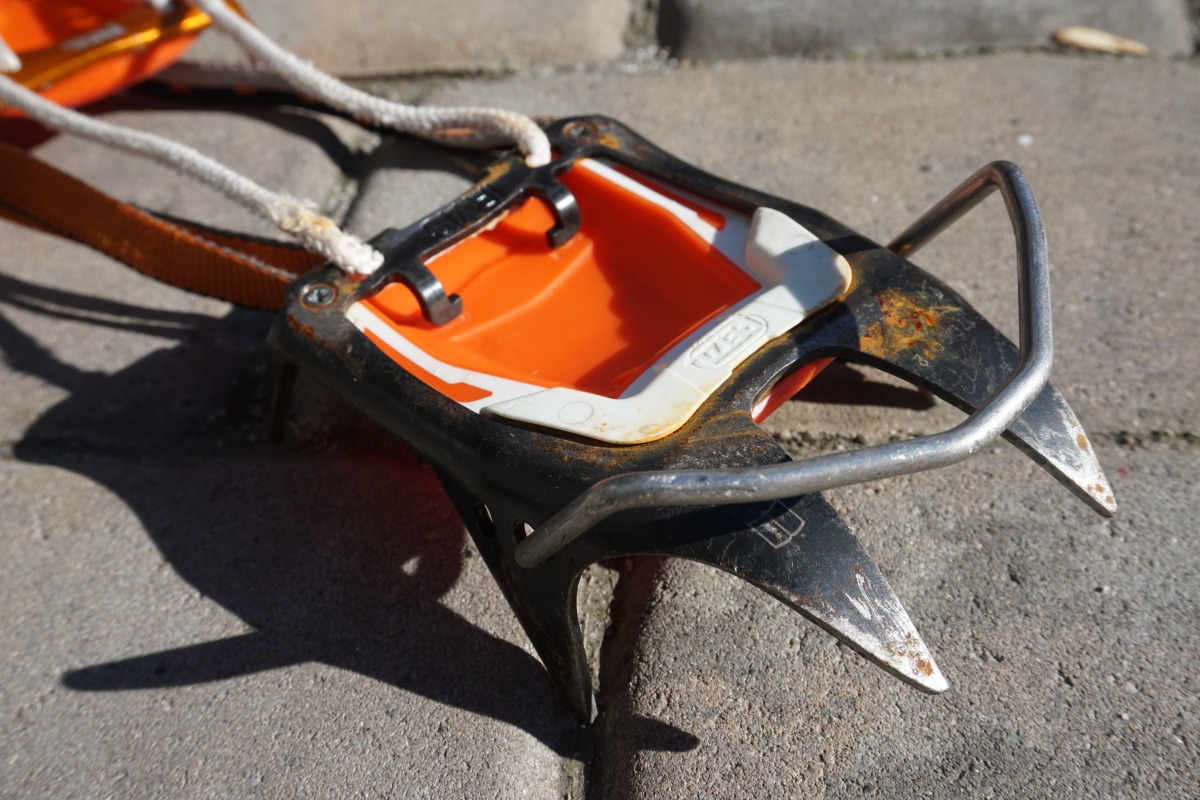By Roger Romani
Like many ski mountaineers, I’m simultaneously a gram weenie and a gear destroyer. I want my gear to weigh nothing, climb and ski everything, and outlast a Nokia phone. With that exacting rubric in mind, I’ve spent the last four years testing the Petzl Irvis Hybrid crampon on ski mountaineering lines in the Sierra and beyond. While the search for the perfect crampon continues, the Petzl Irvis Hybrid ticks a number of boxes and has left me very satisfied.
Overview
The Petzl Irvis Hybrid is a crampon designed to be packable and light, but still capable enough to climb some of the harder ice and rock that we might find on ski mountaineering routes. Like a few other ski mountaineering oriented crampons on the market, it’s made with a steel toe piece and an aluminum heel. Ideally, the steel toes give most of the hard snow and ice performance of a fully steel crampon, while the aluminum heels (which see comparatively little action) help cut weight.
These are “fully automatic” crampons, meaning that they lock onto the toe and heel lug of a ski boot like an alpine binding. They can also be modified to work in “semi-automatic mode” by switching out the pre-installed “full auto” toe bail to a “semi auto” toe bail included with the crampon.
The cord
In a somewhat unique twist on the traditional crampon, the Petzl Irvis Hybrid crampon ditches the standard steel spring bars connecting the crampon’s toe and heel pieces in favor of dyneema cord (which Petzl calls the “CORD-TEC” system). The cord effectively tensions the toe and heel piece of the crampon against the toe and heel bail of the boot, creating a rigid boot-crampon interface. Different boot sole lengths can be accommodated by changing which hook the cord interfaces with in the heel, effectively shortening or lengthening the cord between the toe and heel piece.
While the cord system does save some weight, I’ve been most impressed by how much the system improves the crampons’ packability. It feels like the crampon packs down to half the size of a “normal” crampon. As someone who loves small packs, this is crucial. Thanks to this crampon, I was able to use a 6L bag on a 10k foot day to climb an Eastern Sierra 14er, Mt. Tyndal (including avy gear, snacks, layers, etc.). With a more bulky crampon, this would likely have been impossible.
Climbing
I’ve used this crampon in a large variety of conditions, from easy soft snow walk-ups like Mt. Adams, to ice cragging around Tahoe, to scrambling on Sierra granite.
The crampon handled easy snow (such as Avalanche Gulch on Mt. Shasta) very well, and is by no means overkill for more mellow climbs. When the slope angle increases, the Petzl Irvis Hybrid continues to perform very well, and keeps on chugging up harder snow and neve (like the U-Notch Couloir on North Palisade). Simply put, I’ve been very happy with this crampon’s performance on any snow that I’d consider skiing.
That said, the performance begins to drop as you get to harder firn and water ice, but stays (in my opinion) more than acceptable for any ski mountaineering purposes. When I skied the left North Peak Couloir outside of Yosemite in late July, the snow felt barely edgeable on skis, but fairly comfortable in the Irvis Hybrids. I’ve even top roped quasi-vertical ice with the Petzl Irvis Hybrids, and have been pleasantly surprised to find that they performed relatively well.
From time to time, I’ve needed to use these crampons on rock, either topping out a line, or on harder pitches. I generally felt secure climbing easy rock (up to 5.6, say), and haven’t had any issues with breaking front points or dulling them beyond what could be expected. That said, these are crampons, not rock shoes, so don’t expect to feel too good on anything approaching 5.10.
I’ve also been very happy with the fit of the fully automatic attachment onto ski boots. The crampons feel welded to your foot, in contrast with the strap on crampons I’ve used in the past. In general, I can’t recommend fully automatic crampons enough for ski mountaineers (or at least those who tour in boots with toe and heel bails, unlike e.g. the Dynafit speednose). They give an absolutely huge boost in climbing performance, plus are lighter and easier to put on compared to their strap on siblings.
Balling
The Irvis Hybrids come with plastic anti-balling plates (designed to keep snow from sticking to the crampons), which have generally worked well for me. In very balling prone snow (e.g. dry snow warming up quickly), I have gotten some snow stuck to these crampons, which I was able to remove by periodically banging my boots together. However, the Irvis Hybrids performed as well as or better than partners’ crampons in these situations.
Durability
Despite initial concerns about the dyneema cord wearing when walking on rocks, I can report that the durability of the Petzl Irvis Hybrid ranges from good to excellent. I have put something around 50 days on these crampons over the past four years, and will not be replacing them for the foreseeable future.
The dyneema cord has worn somewhat, but doesn’t seem to be anywhere close to failing. While the crampons have dulled after the abuse I’ve put them through, they still climb just fine, and could be sharpened if necessary.
Subjectively, I would say that I am very hard on my gear, and have not babied these crampons by any means.
Weight
My pair of Petzl Irvis Hybrids comes in at 539g in the fully automatic configuration, with Petzl claiming that the semi-auto toe bail adds an additional 30 grams.
This is somewhat heavier than true ultra light all aluminum crampons (which generally come in just above 300g), and much lighter than fully steel “real ice climbing” crampons (which often weigh you down around a full kilogram). They’re on par with other “ski mountaineering” aimed crampons, which typically come between 500 and 600g.
Subjectively, I’ve never felt the need for a (heavier) crampon that climbed better, and only very rarely would have been willing to sacrifice the Irvis Hybrid’s very respectable climbing performance to lose 200g.
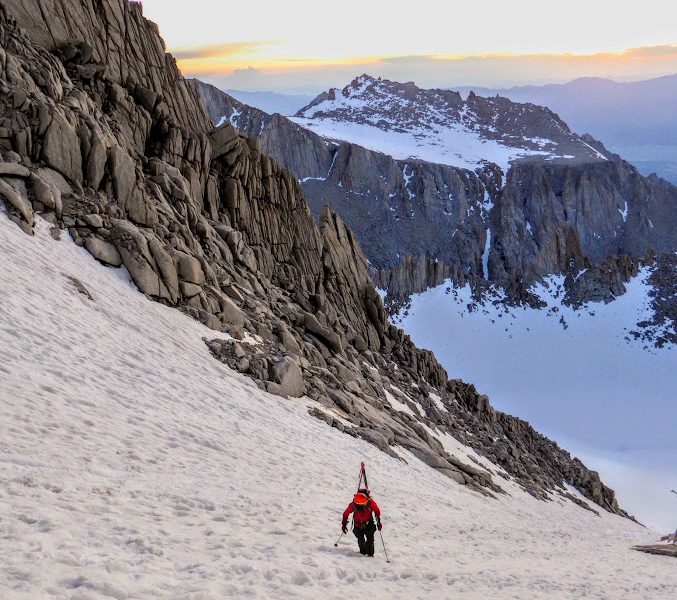
The Petzl Irvis Hybrid also performs well on easier snow walk ups. The Mountaineers Route, Mt. Whiney, 2019
Who are they for?
It’s slightly simpler to frame this question in terms of who this crampon is not for.
If you want to climb very hard on ice and mixed terrain, this is not the crampon for you. Keep in mind that if you want to climb that type of terrain, skiing it is probably not going to be a large part of the equation.
If you want to use crampons with hiking boots or approach shoes, and only want to have one pair, these are not the crampons for you. Personally, if there’s snow, I’m usually bringing ski boots anyway, but some alpine climbers may have different ideas.
If you are extremely weight conscious, and will only be climbing easy snow, there are lighter options out there that may be better for you.
For everyone else in the ski touring world, from a beginner looking to ski their first volcano, to a hardened ski mountaineer looking to climb and ride difficult lines with a light pack, the Petzl Irvis Hybrid is an excellent option. They climb very well for their weight, they pack excellently, and open the door to all kinds of great terrain.
STATS
Weight (measured, fully automatic): 539g
Material: Steel toes/aluminum heels
Number of points: 10
Shop for the Petzl Irvis Hybrid Crampon
Roger Romani is a skier based in the California Bay Area. When not skiing in Tahoe, the Eastern Sierra, or the Cascades, Roger can be found in a UC Berkeley Physics lab, where he works as a graduate student building dark matter detectors. You can follow him on Instagram @roger_romani.
Author’s note: I paid full price for these crampons, and have no relationship of any kind with Petzl or any of their distributors. This review is solely my opinion. While I have done my best to make this review accurate, there may be errors.
Beyond our regular guest bloggers who have their own profiles, some of our one-timers end up being categorized under this generic profile. Once they do a few posts, we build a category. In any case, we sure appreciate ALL the WildSnow guest bloggers!

